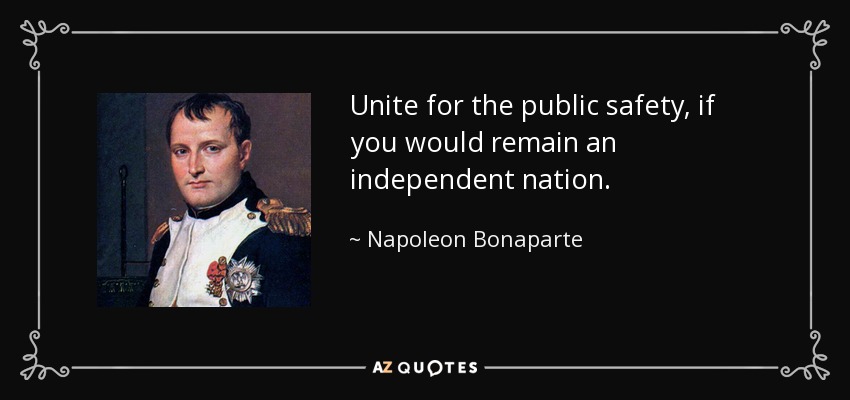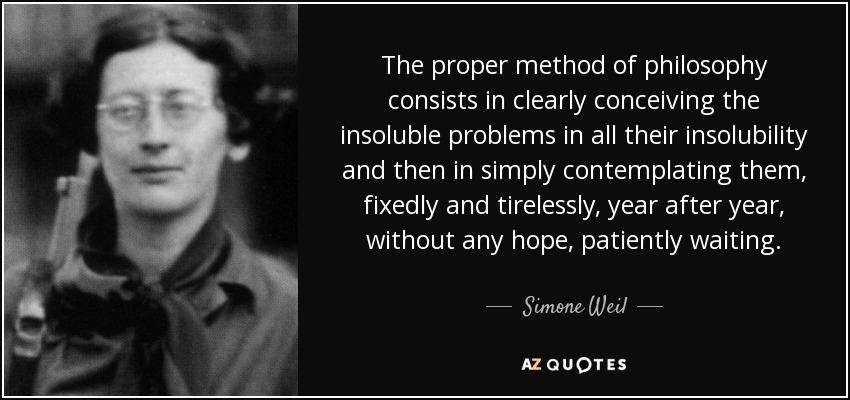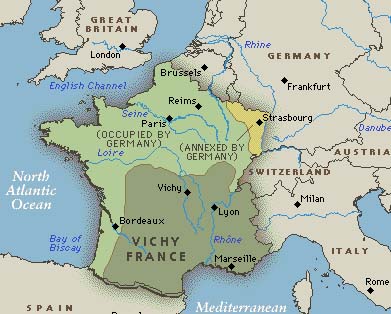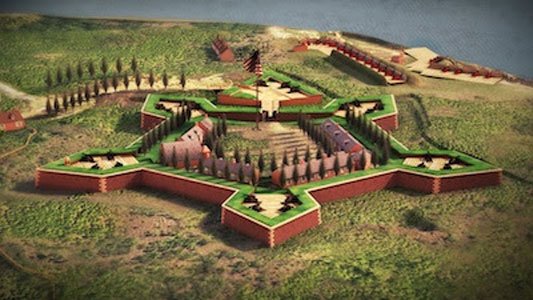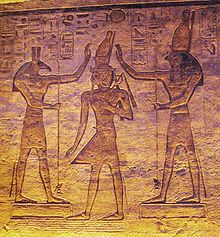Find
Refuge
找到避难所
Zhǎodào bìnàn suǒ
避難所を探す
Hinansho o sagasu
ps71
I have taken refuge in my faith.
I look to find reality as the actual case.
Let reality for me act as a guide
to produce a service that will shine as a find.
Let me never be afraid of sensible reason.
Courage uses the light of truth as a beacon.
Responsibility sets me free from fear of the unseen
to seek help in assimilating what has already been seen
as the mean for what's keen.
There is a context in perception beyond personal vision
that shapes perspective for the service of the versatile given.
Knowledge is solid until it finds a better form.
Assimilation or accommodation are resilient norms.
I know what can be known in the way that was shown,
but the shown has to be owned to be as solid as stone.
Organization for automation builds action for success.
Producing a service for others serves as the real test for what's best.
You were known before you were formed in the womb.
Speech was consecrated by maturity to reach beyond the tomb.
Information for nations requires translation to escape doom.
Knowledge of language is a task to be assumed.
If I speak without love,
I am a loud noise from above.
When I speak with love from above
the word is fulfilled with blessing from the heavenly dove.
Principle is used in the search for truth with knowledge.
Proximity to a word develops thought for college.
False principles are to be avoided, not acknowledged.
Wealth is associated with labor for a nation.
Commerce in the world is a subject for international relations.
Private ownership versus government control is a public policy implication.
The graceful darkness reached out to gain elegant prestige
with a self-criticism that challenged the socialist intrigue.
The hemp on the edge of the winter pasture
served as a meal for the horse that bordered on rapture.
Let reality for me act as a guide
to produce a service that will shine as a find.
I have taken refuge in my faith.
I look to find reality as the actual case.
71 In te, Domine, speravi
1 In you, O Lord, have I taken refuge;
let me never be ashamed.
---------------------------------
I have taken refuge in my faith.
I look to find reality as the actual case.
========================
2 In your righteousness, deliver me and set me free;
incline your ear to me and save me.
3 Be my strong rock, a castle to keep me safe;
you are my crag and my stronghold.
4 Deliver me, my God, from the hand of the wicked,
from the clutches of the evildoer and the oppressor.
5 For you are my hope, O Lord God,
my confidence since I was young.
6 I have been sustained by you ever since I was born;
from my mother's womb you have been my strength;
my praise shall be always of you.
7 I have become a portent to many;
but you are my refuge and my strength.
8 Let my mouth be full of your praise
and your glory all the day long.
9 Do not cast me off in my old age;
forsake me not when my strength fails.
10 For my enemies are talking against me,
and those who lie in wait for my life take counsel together.
11 They say, "God has forsaken him;
go after him and seize him;
because there is none who will save."
12 O God, be not far from me;
come quickly to help me, O my God.
13 Let those who set themselves against me be put to shame and be disgraced;
let those who seek to do me evil be covered with scorn and reproach.
14 But I shall always wait in patience,
and shall praise you more and more.
15 My mouth shall recount your mighty acts
and saving deeds all day long;
though I cannot know the number of them.
16 I will begin with the mighty works of the Lord God;
I will recall your righteousness, yours alone.
17 O God, you have taught me since I was young,
and to this day I tell of your wonderful works.
18 And now that I am old and gray-headed, O God, do not forsake me,
till I make known your strength to this generation
and your power to all who are to come.
19 Your righteousness, O God, reaches to the heavens;
you have done great things;
who is like you, O God?
20 You have showed me great troubles and adversities,
but you will restore my life
and bring me up again from the deep places of the earth.
21 You strengthen me more and more;
you enfold and comfort me,
22 Therefore I will praise you upon the lyre for your
faithfulness, O my God;
I will sing to you with the harp, O Holy One of Israel.
23 My lips will sing with joy when I play to you,
and so will my soul, which you have redeemed.
24 My tongue will proclaim your righteousness all day long,
for they are ashamed and disgraced who sought to do me harm.
Jeremiah 1:5
‘Before I formed you in the womb I knew you,
and before you were born I consecrated you;
I appointed you a prophet to the nations.’
---------------------------------
You were known before you were formed in the womb.
Speech was consecrated by maturity to reach beyond the tomb.
Information for nations requires translation to escape doom.
Knowledge of language is a task to be assumed.
========================
1 Corinthians 13:1
If I speak in the tongues of mortals and of angels, but do not have love, I am a noisy gong or a clanging cymbal.
---------------------------------
If I speak without love,
I am a loud noise from above.
========================
Luke 4:21
Then he began to say to them, ‘Today this scripture has been fulfilled in your hearing.’
---------------------------------
When I speak with love from above
the word is fulfilled with blessing from the heavenly dove.
========================
George Berkeley
Principles of Human Knowledge
First Principles
"...there may be some grounds to suspect that those lets and difficulties, which stay and embarrass the mind in its search after truth, do not spring from any darkness and intricacy in the objects, or natural defect in the understanding, so much as from false Principles which have been insisted on, and might have been avoided."
---------------------------------
Principle is used in the search for truth with knowledge.
Proximity to a word develops thought for college.
False principles are to be avoided, not acknowledged.
========================
Objectivity
Know Yourself
in the World
https://quotes.thefamouspeople.com/images/quotes/adam-smith-521.jpg
Introduction to the Wealth of Nations
1776
Text
"The annual labour of every nation is the fund which originally supplies it with all the necessaries and conveniencies of life which it annually consumes, and which consist always either in the immediate produce of that labour, or in what is purchased with that produce from other nations."
---------------------------------
Wealth is associated with labor for a nation.
Commerce in the world is a subject for international relations.
Private ownership versus government control is a public policy implication.
========================
The private ownership of business defines success by the impact that the product or service has on the market.
What does the government control of private business do to the strength of that measure for serving the public through the success of the market?
Are monopoly and oligarchy formed with socialism? It's not as though private owners haven't used money and influence to control government control, but who assumes responsibility for decisions that are made by the government to benefit just the wealthy, just labor or a variety of populist platforms?
Doesn't liability without recognition increase the liability?
Insurance is required by law for certain service. Operating a car without auto insurance is punishable offense. It is punished by increased cost or the removal of the service.
The service is required by law to operate a vehicle. Certain insurance agents have stage accidents in order to force the use of the service to drive up the price for the product.
When a customer is paying enough to buy a used car for the protection of the vehicle and the price for the insurance for the next vehicle is increased in order to decrease the likelihood of such an action, then the market is not a measure for a service to the consumer.
The consumer is made to pay for the benefit of the insurance industry. Their lobbies are paying for legislation that protects their service. Government officials take kickbacks for campaigns or personal benefit.
The problem has become one of government corruption, but it is blamed on capitalism because the lobbies paid for the service. It's actually a form of socialism.
Similar analysis can be applied to the health insurance or the electricity industry. Does management in these industries provide sponsorship for small business ventures or are they directed to buying favor from government officials?
Increasing the prices without the extension of benefit with service is a liability. Insurance and power companies claim to extend service, but leave it for the customer to imagine that use of the service is used to increase the price. Are they going to decrease prices to make the product affordable?
What is the labor for insurance if the organization is directed to buying increase in government protection? The labor is for the corruption of official authority.
An Enlarged Fallacy
Objectivity seeks to reduce fallacy to a point for manageability. There is a certain amount of deception involved in public expression. The degree can make the difference between respect for the ability of people to use critical judgment of a product and fraud.
Much of the media expression that passes itself as journalism is really ad hominem followed by strawman fallacy or strawman followed by ad hominem. The fallacy seeks to enlarge itself as though it increases the authority for the argument.
When the process is repeated, it creates an even larger enlarged fallacy. This enlargement of the enlarged fallacy is being used to create the impression that the liberal element in Congress and covert agency has reason to impeach the president. It is subversive argument.
Simone Weil
b. 2.3. 09, Paris, France
d. 8.24.43, Ashford, Kent, England
Paris
How many wars were related to the French Revolution?
The French Revolution took place between 1789 and 1799. There was a republic in France from 1792 to 1804.
A Constitutional monarchy was instituted from 1789 to 1791. The Declaration of the Rights of Man and of the Citizen was published during the first year. Thomas Jefferson worked with General Lafayette to document principles for governance.
The Civil Constitution of the Clergy turned the clergy into employees for the state on 12 July 1790. Priests and Bishops had to be elected. They were paid a set wage. There were Catholics who objected to the election system because it denied the authority of the pope over the Church in France, but the celebration of the mass was left largely intact.
The First Amendment for the US Constitution and the separation of Church and State prevented any such system from being considered in the new republic in the United States of America.
The National Constituent Assembly was convened to draft a Constitution. It was completed in 1791.
The Reign of Terror is a label used by some historians for French history between 1789 and 1794, The Committee for Public Safety came under the control of Maximilien Robespierre. He was a lawyer associated with the Jacobins.
The Jacobins were a club in Paris. They were a group of men who were anti-royalist radicals for democracy. They were willing to use violent revolution and reports about violence to overthrow the government and to maintain the revolutionary replacement.
Public archives indicate that at least 16,594 people were executed by the guillotine. Concern that the government that overthrew the monarchy would be overthrown by a coalition sympathetic to the monarchy contributed to the sense that the report had to be exaggerated to emphasize intensity in conviction that a Constitutional Republic would be better than monarchy.
There would have to be as many graves with corpses in them as there were reported deaths to verify the accuracy of the report. The guillotine was brutal in finality. Decapitation was the cause of death. It was used in the republic as modern expression for the decapitation of a citizen in Rome as a quick means of death that did not include physical torture.
The greatest error in the terror of the guillotine was that it made class the case for conviction and execution. The general implication was that to be born as an aristocrat was to be born guilty of criminal offense against the state. It place family success in a line of succession into arrears. This put the republic and kingdom into a state of degeneration in the administration of government.
Napoleon declared his goal for a united republic with his relation of independence to public safety.
Independence
Public safety was tagged as the reason to celebrate the expansion of the French Empire.
There was an empire under Napoleon from 1804 until 1815. The Bourbon Restoration of Monarchy lasted from 1815 to 1830 with Louis XVIII and Charles X. The July Monarchy ran from 1830 to 1848 with Louis Philippe d’Orleans.
There was another republic for four years. It ran from 1848 to 1852. Another empire was extended with Napoleon III from 1852-1870. A depression lasted from 1873 to 1890.
The Belle Epoque or the “Beautiful Era” lasted from 1871 until 1914 in France.
The era was named in retrospect when it was contrasted to the horrors of World War I. It is dated from the end of the Franco-Prussian War in 1871 to the outbreak of WW I.
It was part of the Third Republic in France. It was during the apex of the colonial period. The time was characterized by optimism, regional peace, economic prosperity and cultural innovations that were technologically scientific.
When the French people looked back at this period after the devastation and hardship imposed by two world wars, they saw a time that was characterized by prosperity with peace and the joie de vivre (joy of living).
They had lost the war with Prussia. They experienced a depression that lasted nearly two decades, but they were shifting their political and social organization toward economic benefit without the political dependence on military expansion.
The French Republic was being reconstituted toward producing products for the health and well being of people. Domestic products were the chief characteristic for the new state.
The arts flourished during this period, especially in Paris. Fashion was both a graphic and a performance art. The fashion was anti-Edwardian and pro-elitist. It was designed for the peak of luxury for the select few.
Religion for this state of affairs was directed to the majority group. The largest group had become the function for the Republic. The most serious political issue to face the people was the Dreyfus Affair. The affair displayed the difficulty in making religion a function for the state.
Captain Alfred Dreyfus was convicted of treason with evidence that was fabricated by French government officials. Anti-Semitism tolerated by the general French public in everyday society was directed at Dreyfus. Prejudice became the central issue in the controversy and the court trials that followed.
Public debate surrounded the Dreyfus Affair. The scandal lasted from 1894 until it was resolved in 1906. The uproar peaked after a letter sent to newspapers by prominent novelist Émile Zola entitled J'accuse was published in 1898.
The letter condemned government corruption and French anti-Semitism. The Dreyfus Affair consumed the interest of the French for several years. It received heavy newspaper coverage.
Religion cannot promote insurrection, subversion or terrorism and retain legal status in a free society.
It can't be reduced to a function for the state either. Social development is a key characteristic for a healthy economy. The competitive market is a regulatory agency that the government should not seek to eliminate,
Religion is supposed to promote the belief that a good life can be achieved with the organization to serve self and others. This belief is beneficial to the society and the state that governs it, but it is not dependent upon the state for tax money. Non-profit status allows the religion to develop as a social agency without establishment by the government.
Simone Weil
Patriotism
SW: "Our patriotism comes straight from the Romans. This is why French children are encouraged to seek inspiration for it in Corneille. It is a pagan virtue, if these two words are compatible. The word pagan, when applied to Rome, early possesses the significance charged with horror which the early Christian controversialists gave it. The Romans really were an atheistic and idolatrous people; not idolatrous with regard to images made of stone or bronze, but idolatrous with regard to themselves. It is this idolatry of self which they have bequeathed to us in the form of patriotism." (Prelude to Politics, 1943)
Simone Weil was born in her parents’ apartment in Paris on February 3, 1909. Her father Bernard was a medical doctor. Her mother’s name was Saolomea. They were Alsatian Jews. They had moved to Paris after the annexation of Alsace-Lorraine by Germany.
Simone was healthy for the first six months. She had an attack of appendicitis. She struggled with poor health throughout her life.
She was the second of two children. Her older brother became the famous mathematician, Andre Weil. The two enjoyed a close relationship. Their parents were agnostic and fairly affluent. The children were raised in an attentive and supportive atmosphere.
She learned to translate Ancient Greek by age 12. She later learned to decipher Sanskrit to read the Bhagavad Ghita. She developed an interest in religion in an attempt to understand each tradition as an expression of transcendent wisdom
She studied at the Lycee Henri IV with the tutelage of Emile Chartier to prepare for entrance to the Ecole Normale Superieure (ENS) in Paris.
This was the most selective of the colleges outside the public university system. It had been conceived during the French Revolution. It was intended to provide the Republic with a new body of professors trained in the values of the Enlightenment. The principal goal of ENS is to train professors, researchers and public administrators. ENS students hold the position of paid civil servants.
Her first attempt to enter in June 1927 failed due to low marks in history. She was successful in 1928. She finished first in the exam for the certificate of "General Philosophy and Logic."
She studied philosophy at the institute. She earned her DES (diplome d'etudes superieures) in 1931. The DES is roughly equivalent to an MA. Her thesis was entitled "Science et perfection dans Descartes" (Science and Perfection in Descartes).
Philosophy
Her involvement in political action was an expression of sympathy for the working class. She declared herself to be a Marxist and a pacifist.
She traveled to Germany early August 1932 in order to understand the conditions fostering Nazi Germany better. She wrote to friends upon her return to France.
German trade unions were the single force in Germany able to generate revolution, but they were fully reformist. Long periods of unemployment left many Germans without energy or esteem. She criticized the tendency of social organization to build bureaucracy.
She arranged to have Leon Trotsky stay in her parents' apartment in December 1933 while he was there for secret meetings. She had argued against Trotsky in print and in person. She stated that elite communist bureaucrats could be just as oppressive as the worst capitalist.
Weil applied for a sabbatical from teaching on 20 June 1934. She was determined to spend a year working in Parisian factories to investigate conditions. Her sympathy for labor made the objectivity of her investigation suspect, but factory conditions had a reputation for harsh and unsafe unexpectations by description.
There was more humiliation in her experience than physical suffering. The emotional consequence produced fatigue rather than a desire for rebellion. She described the work as a kind of "slavery" nonetheless.
She went to the Spanish Civil War in 1936 despite her profession of pacifism. She joined the Republican side in the anarchist ranks with Buenaventura Durruti. She took a rifle, but was expelled from the combat unit due to her poor eyesight.
She was a poor shot on the firing range. She ran into a pot of boiling liquid because of her near-sightedness. She received noticeable burns. Her family was contacted to take her away. They took for to Assisi for her recovery. It was reported that her unit was nearly wiped out after her departure. Every woman in the group was killed.
Weil experienced religious ecstasy in the Basilica Santa Maria degli Angeli (St. Mary of the Angels). She was led to pray for the first time in her life. This was the first of three encounters that would lead her to convert to Christianity.
She revisited her Marxist analysis after the encounter from 1937-38. She argued that there is a contradiction in Marx's thought. He had identified the overthrow of the government as the object for the proletarian revolution, yet the militant state was inherently oppressive. The definition of the state as the military, the police and the bureaucracy made it the object for liberation that would result in another form of oppression. Would it be better with communism?
She visited the Benedictine Abbey of Solesmes from Palm Sunday to the following Tudesday during the week of Easter in 1938. She was suffering from headaches while she listened to Gregorian chant. She found a joy so pure that it gave her the impression that she could live with divine love in the midst of affliction.
She claimed to have an experience of the divine presence while reciting the George Herbert poem called "Love." She stated that Christ took possession of her while she fixed her attention of the poem during a severe headache.
Her writing became more mystical from 1938, but retained the focus on social and political issues. This spiritual emphasis expressed a critical judgement against Marxism, but moved her toward a Hegelian nihilism. It was objective insofar as it was against socialism of any kind, but she was also against government itself and capitalism.
France became the singular object for affection, but French independence from anything but critical judgement against anything not French was the only objective allowed.
She turned to her aesthetic appreciation of religion as a way to compensate. She was attracted to Roman Catholicism. It was still French, but it allowed for a global perspective defined in relation to the pope and Roman custom. She declined baptism to continue to look at things outside of Christianity.
Weil was keenly interested in other religious traditions. The Greek and Egyptian mysteries, Hinduism and Mahayana Buddhism were favored. She believed that all these and other traditions contained elements of genuine revelation for the beauty of the world.
She was opposed to religious syncretism. This allowed for interfaith political organization, but discouraged the formation of a single religion with a common prayer service to make the public into one faith group.
She claimed that syncretism effaced the particularity of the individual traditions. Language and custom effect behavior with belief as an expression of cultural identity. Contrast is necessary for reasonable judgment regarding the formation of policy with position for beneficial relations.
Weil renounced her pacificism after the military alliance of Germany and Italy was formed in 1939. She felt that France was no longer strong enough to remain generous or merely defensive.
Map of Vichy France
She left Paris with her family on the last train in 1940 following the German western offensive. They took residence in Marseilles in Vichy France.
She was introduced to the Dominican priest Joseph-Marie Perrin to discuss the question of baptism. Perrin asked his friend, Gustave Thibon, if he could get Weil a job as an agricultural laborer.
She worked in the grape harvest during the fall of 1941. She worked for eight hours a day like the others, but she stayed in her employer's house. She took a copy of Plato's Symposium with her to the vineyards to teach the text to her fellow workers.
She agreed to leave France in 1942 so her parents could be safe. She also felt that she could do more for France in another country. They traveled to New York via Morocco.
She wrote profusely during her stay in New York, but felt that she would be one step closer to the liberation of France with the Free French movement in London. She was given a small office and wrote day and night for four months. She wrote a total of about 800 printed pages. She resigned from the movement in July.
She died on Tuesday, 24 August 1943. The coroner pronounced her death a suicide. She had been refusing to eat out of sympathy with those who were suffering in occupied France. Malnutrition left her immune system susceptible to disease.
She contracted tuberculosis and died from cardiac arrest. The diagnosis was severe insofar as she had suffered from ill health from the time that she had been a baby. There was less willfullness to die than the inexplicable inability to not eat. The fear of compromising a weak immune system drove her to 'describe' the fear of food as an ascetic effort.
The teleology of labor in Weil's philosophy corresponded with Hegel and Marx in opposition to the private property proposed by Locke.
While slavery is an offense against natural law, the ownership of private property is not. It can be argued that the key contributions that Locke made to modern law was the proposal for private property and the reduction of cruelty in punishment.
The English Bill of Rights also document the right to bear arms. If it was not limited to English Protestants, it could have been more attributed as a right for citizens in defense against attack.
Simone Weil
S. 西蒙娜威尔
T. 西蒙娜威爾
西 Xi west 西 nishi west Shi し シ Si 시 city
蒙 meng to suffer 蒙 mo darkness mo も- モ- mon 몬 mon
娜 na elegant 娜 da graceful ne ね ネ Ba 바 bar
威 Wei prestige 威 i prestige Vei ヴぇい ヴェイ il 일 work
尔 er you 爾 ore you ru る ル
-------------------------------
The graceful darkness reached out to gain prestige
with a self-criticism that challenged the socialist intrigue.
======================
2.3.1870
15th Amendment to US Constitution
Vote- Men of Color
The right of citizens of the United States to vote shall not be denied or abridged by the United States or by any State on account of race, color, or previous condition of servitude.
===================
Race is identified by color in this amendment. The extension of the right to vote to men of color was enacted to reduce racism in election contests and society in general. The right for women to vote was not instituted until the 19th amendment in 1920.
The 15th amendment was ratified on February 3, 1870 as the third and last of the Reconstruction Amendments.
The right to vote is a key feature in the definition of citizenship. The 14th amendment had stipulated that all persons born or naturalized in the US are citizens. Naturalization is the path to citizenship.
Those who refuse to register the date of entry, duration and location of residence are operating without the documentation of intent to obey the law. They are treated as illegal immigrants due to illegal entry or duration in residence.
2.3.1913
16th Amendment
National Income Tax
The Congress shall have power to lay and collect taxes on incomes, from whatever source derived, without apportionment among the several States, and without regard to any census or enumeration.
===================
The 16th amendment allows the federal government for the United States to collect an income tax from all Americans. Taxes on houses or other property are considered “direct” taxes by the Constitution and would have to be divided back among the states. States have levied property and sales tax as a general practice.
Federation had been ruled out as a form of government for the US on the basis that competitive prices between states would prohibit free trade. The states would then be engaged in a high cost competition to claim the power to charge other states more for trade or travel.
The national government was called federal in order to suggest that any national tax would have to be for the benefit of the nation. The idea was that a national tax was a step in the direction of overt centralization for the consolidation of the power for national officials. Conservative policy in taxation was the ideal for the experiment in constitutional republican government.
There are certain features of monarchy that are implicitly conservative. Inheritance is used to conserve national resources with respect for the line of succession. There was one monarch who didn't run for election at the expense of funding agents and agencies. The ruler had to work with a body of elected and appointed officials in order to discern the "will of the people" insofar as it was for the benefit of national security in relations.
When anti-monarchical democracy became a feature of the renaissance revival of republican ideas, constitutional documentation became necessary to promote a literate society that kept the people informed about proposals for policy. When the British colonies in North America were organizing for self-government based on English practice and French political philosophy, Virginia became a leader in the documentation of a state constitution.
Principles for National Government
Principles
Virginia's constitution included "a declaration of principles such as popular sovereignty, rotation in office, freedom of elections, and an enumeration of the fundamental liberties -moderate bail and humane punishments, a militia instead of a standing army, speedy trials by the law of the land, trial by jury, freedom of the press, of conscience, of the right of a majority to reform or, alter the government, and prohibition of general warrants. Other states considerably enlarged this list to include freedom of speech, of assemblage, of petition, of bearing arms, the right to a writ of habeas corpus, inviolability of domicile, and equal operation of the laws. In addition, all the state constitutions paid allegiance to the theory of executive, legislative, and judiciary branches, each one to be checked and balanced by the others."
=======================
The 16th amendment wasn't ratified until 1913. It was only a year before World War I started. The 14th amendment had defined citizenship as a condition of birth or naturalization within national boundaries. The 15th amendment attributed the right to vote to citizens irrespective of race or former servitude.
The boundaries of the competition with the inherent conservativism of monarchy have been pushed by the liberal element for increased expenditure. The precipitation of profit for officials has been open ended for advocates of liberal spending policy. The proposal to secure the borders with a wall forms a contrast with precipitation.
The contrast recommends a budget that balances the concerns for national security. Liberals are not only pushing for an increase in expenses, they are promoting a policy that contradicts due process in law with respect for habeus corpus to support the accusation of sexual assault with the defamation of character for the accused. Ad hominem argument has been supported with straw man fallacy and false dichotomy.
The spending policy for national government has become mythically liberal for taxation. Conservative policy is necessary to cap further expansion in costs for a 'service' that refuses to solve the problems that it creates for its own benefit. While socialism has been the de facto economic theory, Marx started the trend of identifying capitalism as the faulty theory.
Maria Makino 2.2.2001, Nishio, Aichi, Japan
牧野真莉愛
马利啊马基诺
Morning Musume
Are You Happy?
马 Ma horse 牧 Maki pasture Ma ま マ Ma 마 hemp
利 li profit 野 no field ri り リ li 리 lee
亚 ya Asian 真 Ma genuine a あ ア a 아 ah
马 Ma horse 莉 ri Arabian jasmine Ma ま マ Ma 마 hemp
基 ji base 愛 ai love ki き キ ki 키 key
诺 nuo promise no の ノ no 노 furnace
======================
The hemp on the edge of the winter pasture
served as a meal for the horse that bordered on rapture.
-------------------------------
Nishio
Nishio is situated on the northern coast of Mikawa Bay on the Pacific Ocean in southern Aichi Prefecture on Honshu.
It is a regional commercial center and fishing port. It has a mixed economy of light manufacturing and agriculture. Numerous suppliers to the Japanese automotive industry such as Denso and Aishin have production plants in and around Nishio.
It is also the largest producer of powdered green tea in Japan. It is one of the leading producers of Unagi eels.
The city lies on the eastern bank of the Yahagi River. The fertile plains along the Yahagi River have been used for rice-farms. The soil has been used for the production of tea and cotton since ancient times.
Shell mounds dating to the late stone age are found in what is today the town center. The mounds point to fish and seafood as important early local produce.
Nishio is sheltered by Chita and Atsumi Peninsulas. The local climate is mild. There are a number of natural sites to visit. Hirahara Waterfall and nature trail are located in Hirahara-cho. Kira Waikiki Beach has a series of sheltered sandy coves. The beach is open for bathing and water sports from June to September.
Sakushima is a samll inhabited island with many traditional wooden buildings in Mikawa Bay. It can be reached by ferry from Ishiki Harbor. It is popular for fishing trips.
Sangenesan Skyline is a spectacular forested mountain range that overlooks Mikawa Bay. It is used for hiking and bird watching.
Yatsuomote-yama is a hillside park in central Nishio. It offers a good view of the surrounding cities, mountains and waterfront.
Syoboji Kofun is a megalithic tomb. The tomb with the casket is made from large stones. The grounds are key-shaped when viewed from above. Kofun were constructed between the third and sixth centuries CE.
Nishio Castle was built by Ashikaga Yoshiuji around 1221. Sakai Shigetada rebuilt the castle in 1585 with moats, stone walls, several yagura, gates and a donjon by order of Tokugawa Ieyasu. It was expanded further by Tanaka Yoshimasa, ruler of Sunpu Castle during the reign of Toyotomi Hideyoshi.
The castle was dismantled in 1872 following the Meiji Restoration. The current structures include a large "yagura" and gate. The reconstruction was complete in 1996 to boost local tourism along with a local history museum.
The castle is the highlight for the sightseeing tour.
The Toba Fire Festival is held on the 2nd Sunday in February. Two teams of local men from Hazu and Kira vie to pull bamboo poles from a huge bonfire. The traditional rite is meant to ensure a good harvest.
The population for Nishio was about 100,000 in 2000.
Marina Makino
Makino Maria was born on February 2, 2001 in Nishio, Aichi, Japan.
Makino auditioned for the Morning Musume 10ki member group in 2011, but did not pass. She tried again the next summer, but failed again.
She joined Hello! Pro Kenshuusei on November 1, 2012. The kenshuusei is the trainee program. It was officially announced that she had joined the group with Kanazawa Tomoko, Kaga Kaede, Wada Sakurako, Ichioka Reina and Kishimoto Yumeno on November 20. The were introduced in the show on December 9.
It was announced during the Morning Musume '14 Concert Tour at Nippon Budokan on September 30, 2014 that Maria had been selected for the 12th generation of Morning Musume along with Ogata Haruna, Nonaka Miki and fellow Hello Pro Kenshuusei member Haga Akane.




